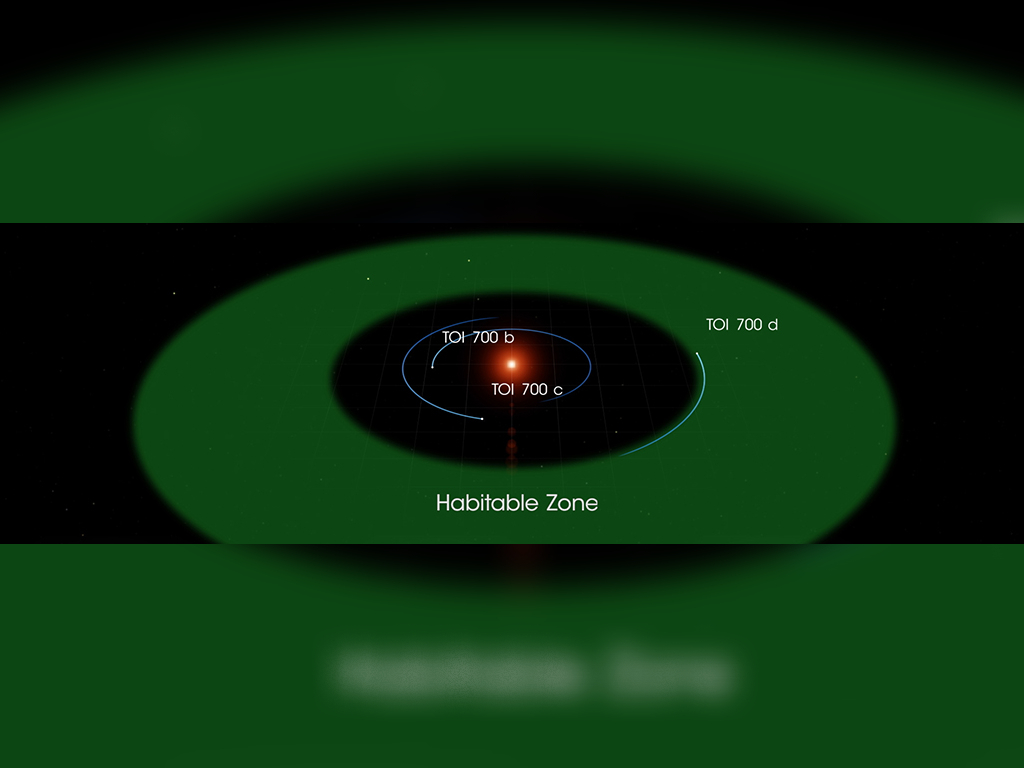NASA has just discovered the first potentially habitable Earth-size planet, 100 light-years from home, the agency has revealed.

The planet was discovered during the agency’s Transiting Exoplanet Survey Satellite (TESS), which is part of the organization’s Explorers program and was first launched in April 2018.
The discovery, confirmed by NASA’s Spitzer Space Telescope, was announced during an American Astronomical Society meeting on Monday in Honolulu, Hawaii.
The planet is part of a multi-planet system, the agency said, around a small, cool M dwarf star called TOI 700 in the Dorado constellation.
The planet, known as the TOI 700 d, is one of three orbiting the star, and is in the star’s habitable zone — the range of distances where conditions may support liquid water on the surface.
In a NASA Goddard YouTube post explaining the discovery, the agency said the “outermost” planet in the system “measures 20 (per cent) larger than Earth, orbits every 37 days and receives from its star 86 per cent of the energy that the Sun provides to Earth.”
Data NASA received from Spitzer gave scientists confidence that it’s a real planet. They were also able to rule out other causes of the transit signal received from the planet.
According to NASA, scientists at the agency’s Goddard Space Flight Center in Greenbelt, Md., have been able to model 20 potential environments on the planet’s surface to see if any version could result in surface temperatures and pressures able to sustain life.
One of the models had the planet covered in ocean and surrounded by a dense, carbon-dioxide-dominated atmosphere. According to scientists, this would’ve been similar to Mars’ atmosphere as a young planet.
Another model had TOI 700 d as a “cloudless, all-land version of modern Earth.”
According to the agency’s press release, the star the three planets are orbiting was originally misclassified as being more similar to our Sun, which made the planets appear larger and hotter.
Researchers, including high school student Alton Spencer, identified the error.

“When we corrected the star’s parameters, the sizes of its planets dropped, and we realized the outermost one was about the size of Earth and in the habitable zone,” Emily Gilbert, a graduate student at the University of Chicago, said in the release.
“Additionally, in 11 months of data we saw no flares from the star, which improves the chances TOI 700 d is habitable and makes it easier to model its atmospheric and surface conditions.”
The discovery is part of a series of findings during the mission that helped confirm five more potentially habitable planets orbiting the TRAPPIST-1 star in the constellation Aquarius.
“Given the impact of this discovery — that it is TESS’s first habitable-zone Earth-size planet — we really wanted our understanding of this system to be as concrete as possible,” Joseph Rodriguez, an astronomer at the Center for Astrophysics, said in the NASA release.
“Spitzer saw TOI 700 d transit exactly when we expected it to. It’s a great addition to the legacy of a mission that helped confirm two of the TRAPPIST-1 planets and identify five more.”
—





Comments